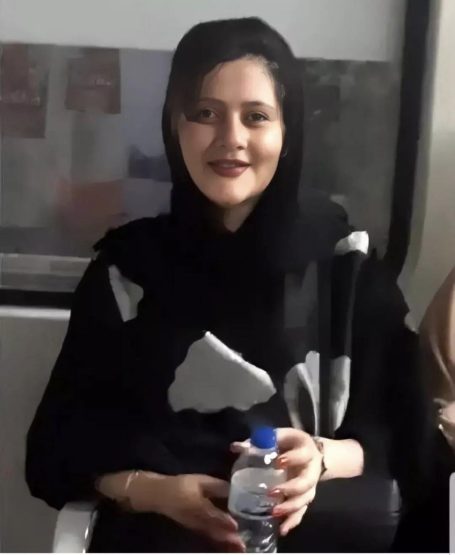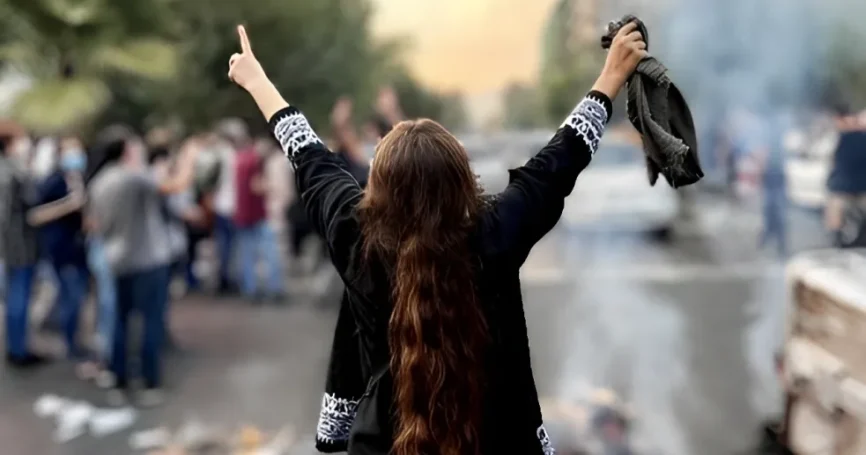English version
Woman, Life, Freedom
What is it and why is it important:
Part II
[Evening, Leipzig, at home, summer 2022].
I've been active on Platform X (Twitter back then) since 2011. I stopped at some point because Twitter is blocked in Iran and you always need a VPN to get in. Which means you're potentially more suspicious. I've been more active since I moved to Germany. It's easier here, but it also makes me feel like I'm keeping in touch with the community. I usually lie down in the evening after work and scroll through the Iranian timeline. On this summer's day, a woman writes something that quickly goes viral. She writes: "Today a woman collapsed in Wosara and after 30 minutes she was taken by ambulance from the police station”. No one doubts that this is true. Almost everyone who doesn't wear a strict hijab has been stopped by the morality police and knows what can happen. A little later, the news breaks. Her name is Mahsa Amini and she is in the hospital in Komma.
Iranian women on Twitter started talking about their own experiences of violence by the morality police. It is also completely believable, as there is enough video footage of it today. A few years ago, there was a similar Twitter trend among Iranian women worldwide with the hashtag #letustalk! This trend was sparked after the wearing of headscarves and hijabs was seen by many Western feminist groups as a "culture" that should not only be tolerated but accepted. Iranian women shared their personal experiences of being forced to wear the headscarf by family, tradition, school, work, study, and society, and they had a point! It is not a cultural heritage to be cherished and preserved, but a compulsion that violates women's human rights.
The hijab is a complex issue. It has many aspects, one of which is culture, of course, but that's not all. As a woman, you have to have lived in a Muslim society to understand all the aspects. But what is clear to understand is that the hijab is basically a restriction of women's rights. The word hijab means covering. It means that from the age of nine, a woman has to cover everything on her body and hair except her hands, feet, and face. So, as you will hear in some media, "compulsory headscarf" is only part of hijab, and as you will hear in some other media, face covering aka burka is not part of the basics of hijab. The hijab is part of the foundations of Islam but is practiced by Muslim believers according to their own feelings or according to their liberality in dealing with religion in everyday life. As long as each woman in Muslim countries can decide for herself, this is generally not a problem. The problem is that the hijab is imposed on women in many different ways, from emotional manipulation to violence. This is the ugly side of Islamic governments. Because there the hijab is always enforced by force. One such country is Iran. And Iran is special because, unlike many other Islamic countries such as Saudi Arabia, the majority of Iranian women do not believe in the hijab at all. The struggle of Iranian women against this coercion also predates the Islamic revolution. But it became particularly important after the revolution, because before the revolution, for a short period of 43 years, women were legally allowed to decide for themselves whether or not to wear the hijab in public. And this struggle continues to this day.
Two days after the news of Mahsa Amini, she died in hospital. Her death was like a spark in a barn. People demonstrated outside the hospital in Tehran. The government, as usual, tried to keep the situation under control with a lot of lies. That she had already been ill, that she had had a heart attack, and so on. But what every woman knows and has experienced in one way or another is that she was probably beaten. And that's why her death moves so many people. I am particularly moved by her death. We have the same name. She is almost the same age as I was when I was arrested. As you can see from the pictures, she was even "decently" dressed. I know what you see on the CCTV, how and where she collapses, I was there too. I could be Mahsa, we could all be Mahsa! And I'm sure many others feel the same way.
Iranian women are starting to cut their hair in front of social media cameras. Cutting one's hair is a symbol of mourning in the Middle East, which now takes on a new meaning: I cut my hair, which I have to cover so that you don't kill me! This has a clear message, it's not just sorrow, it's anger! Soon after, massive demonstrations began in the country. They started at Mahsa's funeral. Someone wrote on her grave: Dear Zhina (Mahsa's second and Kurdish name), you will not die, your name will be a code! And suddenly thousands are shouting: Woman, life, freedom. What is most suppressed under the terror regime of the mullahs? Women, normal life, and, of course, freedom! In the protests from September 2022 to October 2023, hundreds of thousands of Iranians took to the streets everywhere, thousands were arrested and many were even sentenced to death, hundreds were shot dead in the streets by Islamic militias and many were seriously injured. All because they don't want to wear the hijab, which is as important to the Islamic Republic as the wall was to the GDR.
Since then, "Woman, Life, Freedom" has not only been a slogan, but a manifesto. A clear image of the values of the Iranian people, who are suffering under the rule of the Islamic government, deprived of everything: welfare, environment, dignity! Their money is being given to the Houthi, Hamas, and Hezbollah, so that they are getting poorer every day, so that the whole world perceives their country as a threat so that their economy is shrinking every day under the sanctions, and yet they are crying out for women's rights, for life, for freedom. Perhaps desperately, but stubbornly and courageously.
Comments
© Urheberrecht. Alle Rechte vorbehalten.
Wir benötigen Ihre Zustimmung zum Laden der Übersetzungen
Wir nutzen einen Drittanbieter-Service, um den Inhalt der Website zu übersetzen, der möglicherweise Daten über Ihre Aktivitäten sammelt. Bitte überprüfen Sie die Details in der Datenschutzerklärung und akzeptieren Sie den Dienst, um die Übersetzungen zu sehen.


